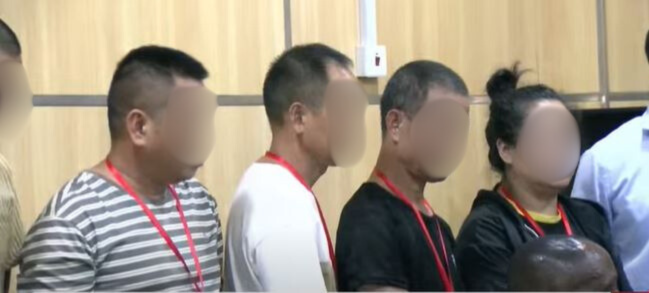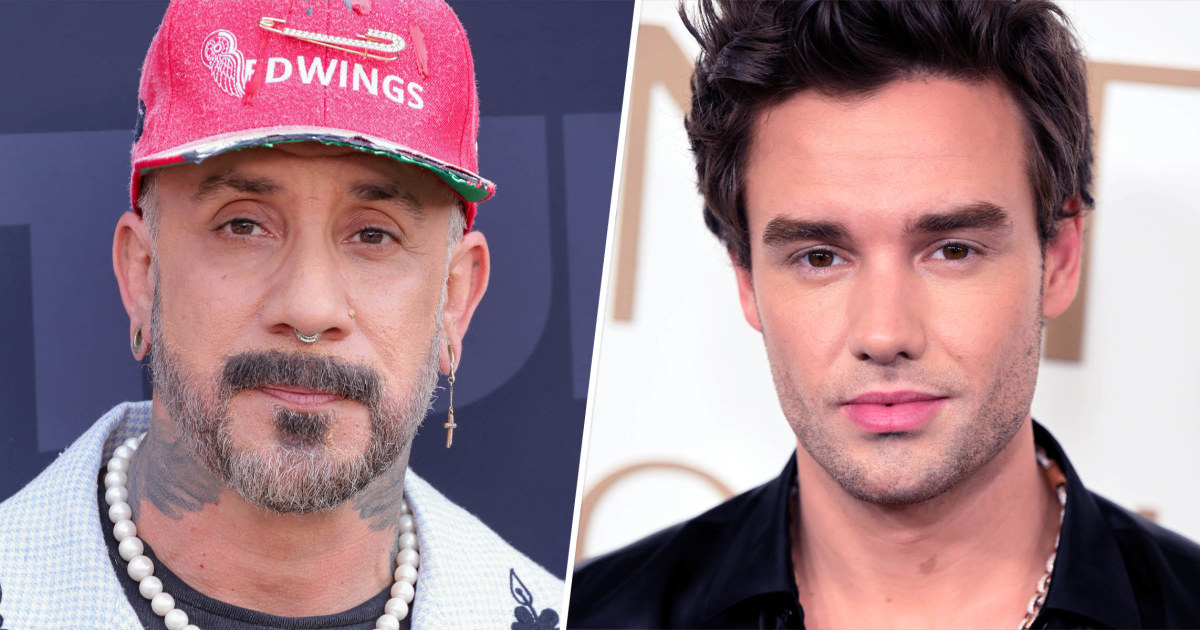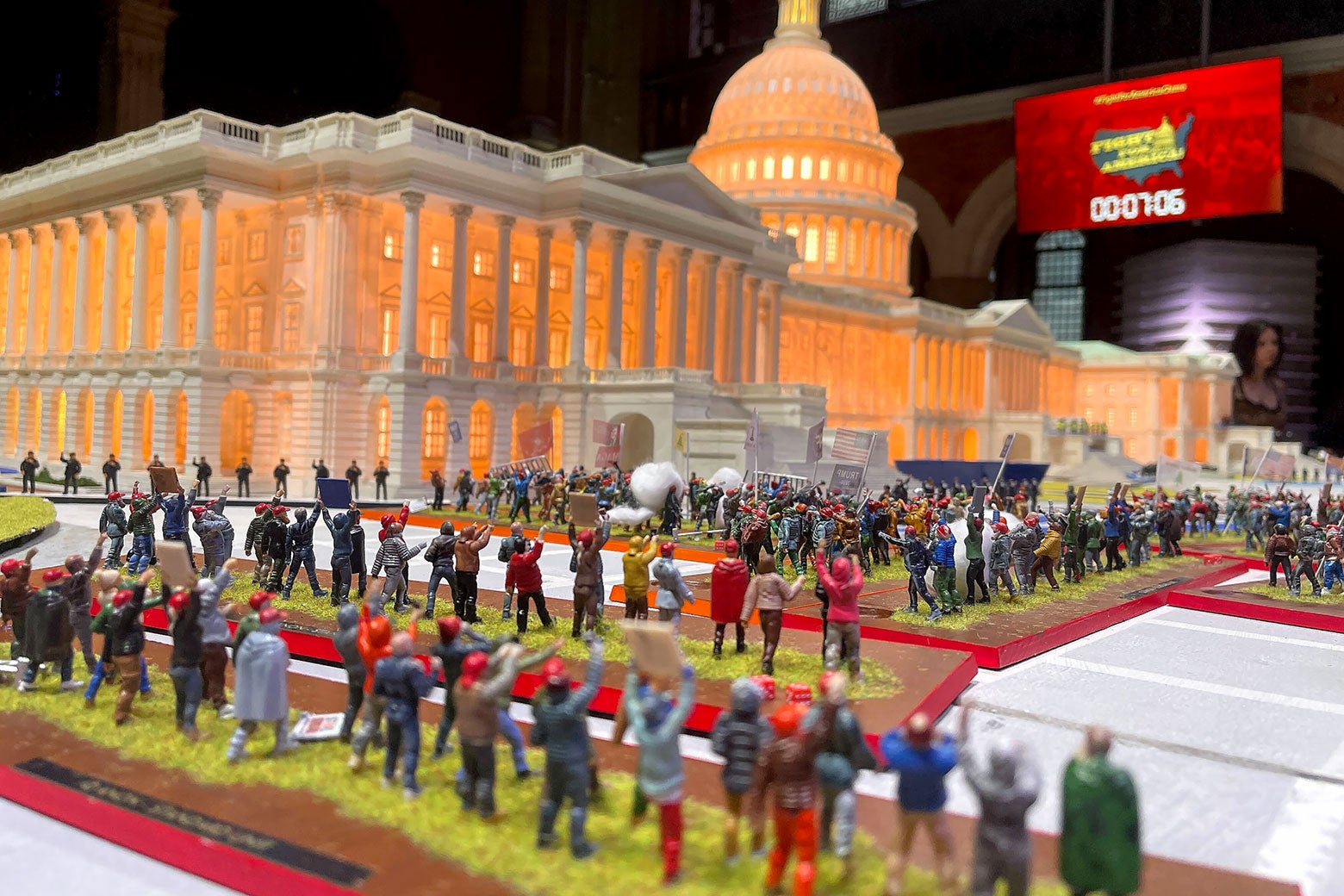
It is the hottest day of the year and I am standing in a converted chapel in central London chugging a can of Budweiser, for freedom. Or rather, a Jan. 6 rioter is. I am one of 20 people who have bought tickets to tonight’s edition of a tabletop role-playing-game event based on the attack on the U.S. Capitol, and I have been cast as Eduardo Nicolas Alvear Gonzalez, a QAnon acolyte and real person whose stated aim on the day was to smoke a joint in the Capitol building.
Chugging the beer gains me an extra card to deploy in the game: a so-called Second Amendment bonus, which lets me pull a concealed firearm at a moment of my choosing. Other participants gain their cards in other ways: singing “We Are the World” on a microphone, as the player assigned the role of Ohio school therapist Christine Priola does, or reciting an oath of office to protect the United States, like the half of the participants assigned to be the members of law enforcement tasked with defending the Capitol from invaders.
The game, which is running for a month over this summer in the heart of London’s theater district, is called Fight for America!, and was designed by the much-revered tabletop RPG developer Alessio Cavatore, the man behind Warhammer as well as The Lord of the Rings Strategy Battle Game. In Warhammer style, every one of the roughly 7,000 figurines that make up units for the red team (the insurgents) and the blue team (law enforcement) has been hand-painted, as well as, in this case, given tiny little riot shields or Trump 2020 flags. And in the center of the room stands a 1:64 scale model of the U.S. Capitol, complete with grounds taking up a space of just over 500 square feet.
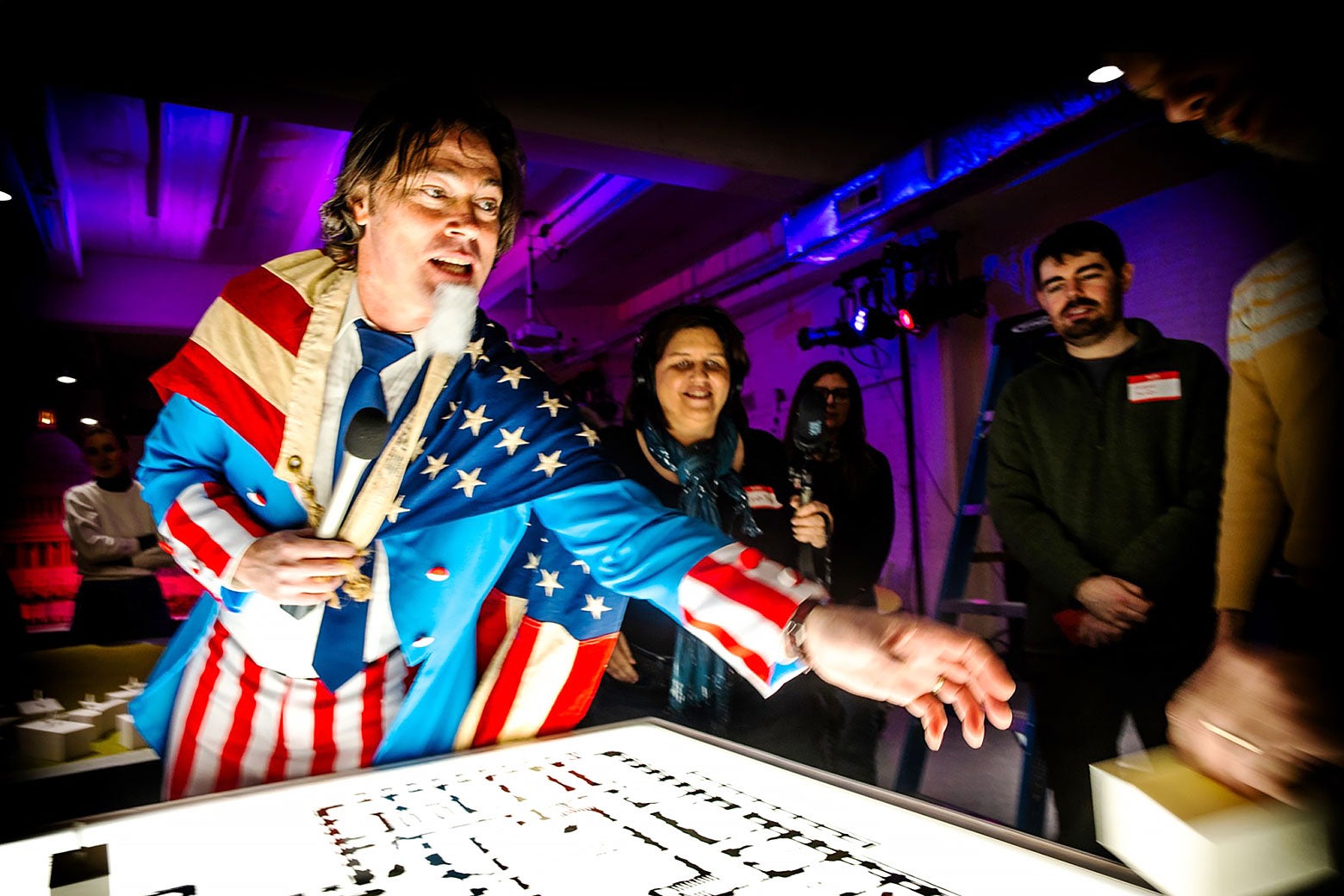
There are, of course, serious reasons to game scenarios like this, and much more serious arenas in which such gaming has been carried out. In early 2023, for instance, members of the U.S. armed forces, intelligence services, and government conducted a training exercise that simulated the possibility of a Jan. 6–style event when the 2024 election result would be announced. One has to assume that there were fewer complimentary packets of Haribo on that occasion, however, and nobody dressed as Uncle Sam, as the master of ceremonies here is. The goal of this project, its makers claim, is not to field-test strategy that might prevent a future civil war, but to ask participants the question: “What about America is worth fighting for?”
I won’t bore you too much with the rules of the game itself—and there are referees roving the room helping us play so that it doesn’t matter if we haven’t fully grasped how it works—but like most tabletop war games, it involves us maneuvering our units and rolling dice to win or lose skirmishes along the way. We gain special cards for each win, which grant us abilities, like pulling the concealed firearm or deploying tear gas (little balls of cotton wool that weaken the unit they are placed on).
The other participants are a mix of politics nerds, RPG fans, and people who just like to find unusual things to do on a Tuesday evening. The woman I play most closely with, assigned the role of Joseph Biggs, an Army veteran and Proud Boys member, is here because her boyfriend, playing Capitol police officer Caroline Edwards, loves tabletop games. In her real life, she’s a cop with riot management experience. “It’s interesting being on the other side,” she tells me, as we strategize about how to deploy our tiny army of dissidents.
While the opposing team considers their next moves, I find out a bit more about my character. Gonzalez, a former Bernie supporter who turned to the right after reading about the Democratic National Committee WikiLeaks emails, and attended the Jan. 6 Trump rally because he’d never gone to one before and thought it might be his last chance, shot to viral fame for succeeding in lighting up a joint in the main atrium of the Capitol, earning him the moniker “Brotunda.” He would be no fan of mine: He cut short one interview he did after the insurrection with a journalist from NorthJersey.com by calling the reporter a sheep, making baa noises, and hanging up.
Being asked to play this man, and to play the game according to his desires, is an odd experience, in that it is extremely easy to get into. It’s just a game—we’re just rolling dice and moving figurines around a table. Periodically, as new tweets from Donald Trump seeming to incite further violence appear on the overhead monitors, our team is invited to chant “Hang Mike Pence.” We do. As the game goes on, a group of girls in their early 20s begins chanting it unprompted from time to time.
The team behind the game is based in the U.K., and that is no doubt partly why it is happening here, but there are other ways in which it makes sense to make a game about Jan. 6 for a U.K. audience. English people do sometimes like to dip their toes into pretending to be American—we have spent our lives watching “y’all” on the television, after all. I hear more than one fake U.S. accent being deployed by players around the room. But I think we’re also less primed than Americans to view Jan. 6 in a totally serious light. I imagine there’s a surreality to the events of Jan. 6 to Americans too, but it probably feels less real to Brits. Although American events send ripples worldwide, it wasn’t happening in our country, or involving our countrymen. Events in America, particularly since the beginning of the Trump era, can feel somewhat, to us, like fiction. “U.S. politics crosses over and obviously becomes a big thing in the U.K., but it’s kind of removed?” as one of my fellow players, a 29-year-old transport sustainability worker called Ted, puts it. “And a lot of Trump stuff feels almost cartoonish sometimes. Like a pantomime.”
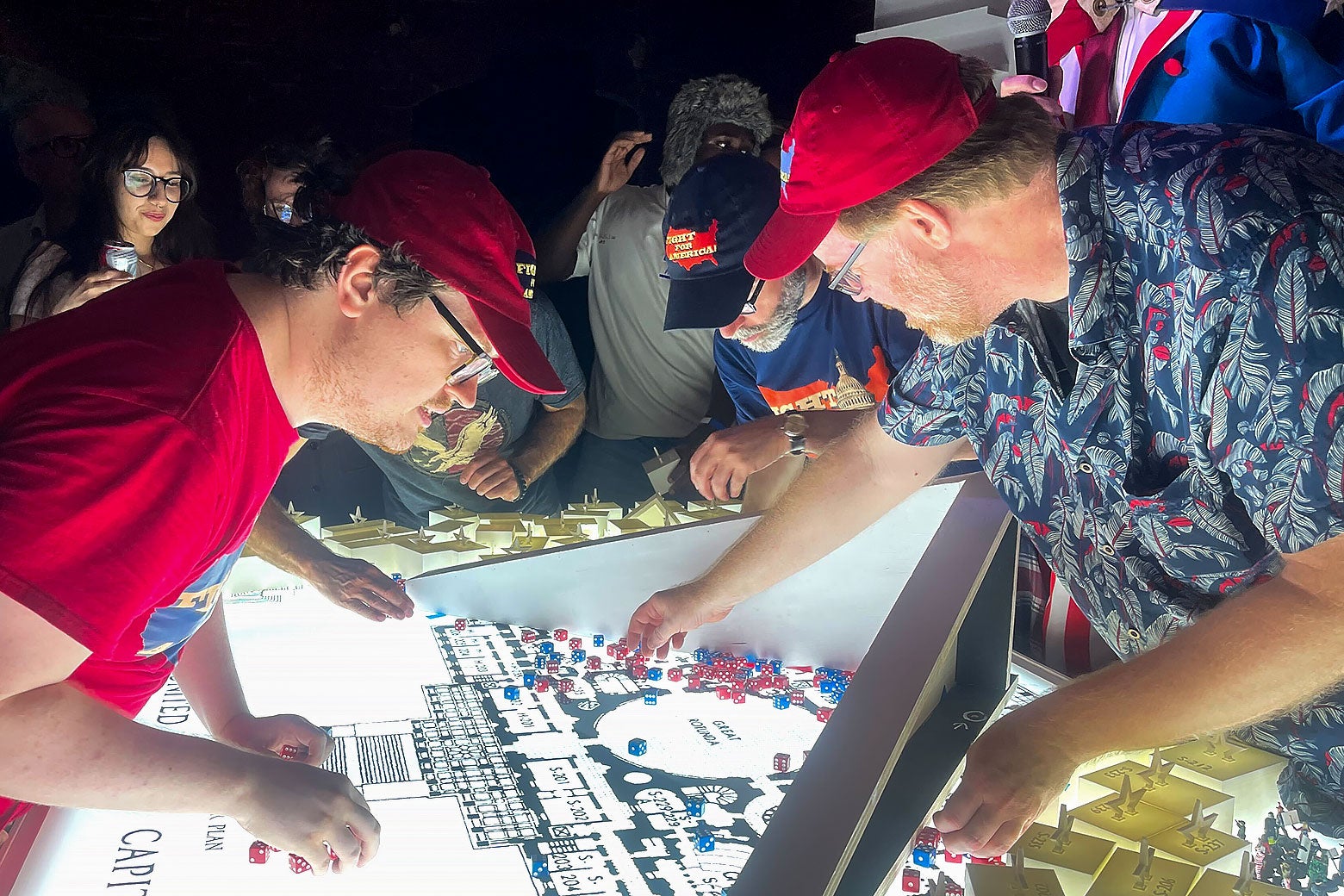
For most of the game, the mood is lighthearted. It’s a board game, and each of us, whichever team we were assigned, wants to win. Nothing much has yet been done to mitigate the sense, for many in the room, that U.S. politics is indeed a pantomime being staged somewhere far away. D.C. police officer Michael Fanone blithely works his way through a packet of salt-and-vinegar crisps, and the QAnon Shaman throws some dance moves as “American Boy” featuring Kanye West plays in the background.
But then, midway through bouts of rolling dice to smash through lines of law enforcement to breach the Capitol building, our opposing team plays something called an “empathy card.” A referee comes over and tells Joseph Biggs and me that we have the opportunity now to show empathy. “These officers want to see their children again,” he tells us. We don’t know what the in-game consequences of showing empathy might be, and it looks like we’re going to win the dice roll to destroy this unit. “No,” my new cop friend immediately says. “This is the game.” The referee then picks three of our units off the board, and names an individual person in each unit who isn’t comfortable with our decision. “This is Chad, from Tennessee. He didn’t sign up to break up families,” the ref says, and confiscates the unit. It’s a jarring moment, but there isn’t time to reflect on Chad and his feelings. There is a countdown clock, and we still have to get our units inside the building in order to stand a chance of winning the game overall, by finding Mike Pence and “stopping the steal.”
The final phase of Fight for America! sees all players move to a new game board that maps out the inside of the Capitol building. Here, my team discover a tiny figurine of Mike Pence, hiding in an office. We’ve done well, Uncle Sam tells us, and so now we get to decide what to do with Pence: hang him or spare him. Each of the 10 members of the red team gets a vote. I remember that I only really came to the Capitol today to light up a blunt, and vote against. Only one other person joins me. We hang Pence, which thankfully is not acted out in any way other than by Uncle Sam quietly removing him from the board.
Then, a TV monitor in front of us fires up, showing bodycam footage of the actual riots. The room falls quiet. The woman playing Gunther Hashida, an 18-year veteran of Washington’s Metropolitan Police who was one of the four police officers who killed themselves in the aftermath of Jan. 6, laughs and then quickly covers her mouth, seeming ashamed. The mood is changing as the footage continues for several minutes. Each player is handed a card by a referee explaining what became of their character. Gonzalez, I read, served 45 days in prison and then was pardoned. The other person who voted against hanging Pence sighs with heaviness into his can of beer. Enrique Tarrio, chairman of the Proud Boys, looks on gravely as rioters smash their way into Nancy Pelosi’s office. We see a mock noose erected on the Capitol grounds. I notice that Ted’s girlfriend, Moya, is crying.
I catch up with her on her way out. The card she’d been given as the video played told her that her character, police officer Brian Sicknick, had died of a stroke the day after defending the Capitol. “I didn’t engage with it at the time that people had actually died,” she says.
I also speak to Steven, a man in his 60s, while he is clearing away the units of figurines. He’s here as a referee, but he was initially a player. As a big tabletop RPG hobbyist, he bought a ticket to play the first game, and was so taken by the project that he volunteered to help the organizers out on future evenings. He’s found it fascinating to participate as a referee, because he gets to watch as people come to the central realization. “This isn’t like killing zombies or dragons. This is real. This is real people’s lives. These are real people’s experiences,” he says. “It is not actually a game.”
Get the best of movies, TV, books, music, and more.




